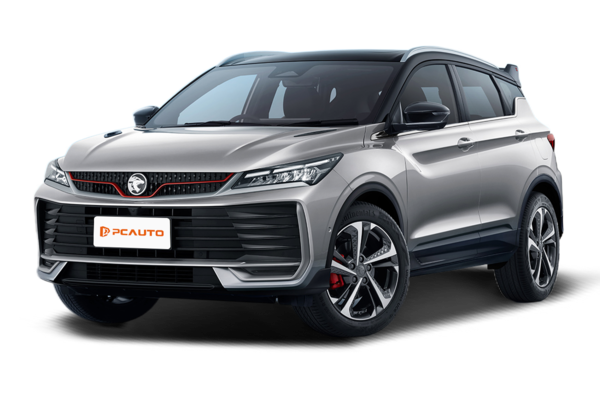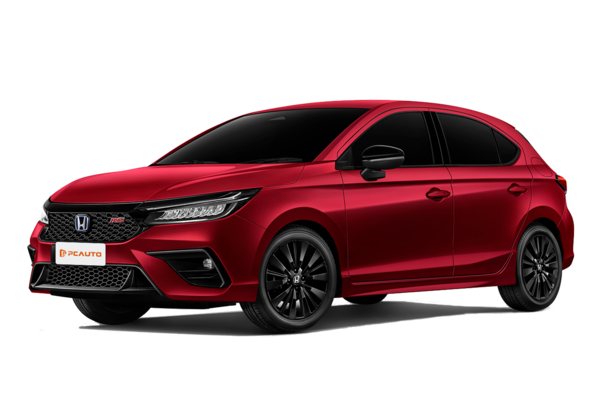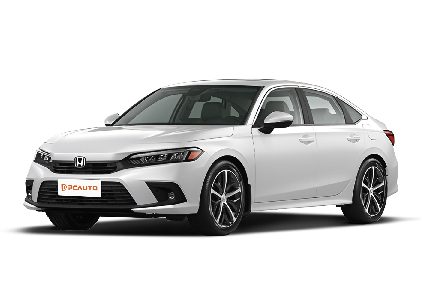Q
what is honda connect
Honda Connect is an intelligent interconnection system for Honda cars. It provides drivers with a range of convenient functions, including vehicle information display, remote control of the vehicle, navigation services, intelligent voice interaction, etc. Through Honda Connect, drivers can more easily control the vehicle status, obtain real-time traffic information, enhance driving experience and travel convenience. In the Malaysian car market, this system is also constantly optimizing and adapting to local usage needs and traffic environment.
Special Disclaimer: This content is published by users and does not represent the views or position of PCauto.
Popular Models
Latest Q&A
Q
How big is Myvi fuel tank?
As one of the most popular national cars in Malaysia, the fuel tank capacity of the Perodua Myvi varies according to different generations and versions. The standard fuel tank capacity of the current third - generation Myvi (from 2017 to present) is 36 liters. It features a lightweight resin fuel tank design, which balances the fuel storage needs and the vehicle's body weight.
The fuel tank size of this B - segment model matches the fuel economy of its 1.3L/1.5L engines. It can provide a cruising range of approximately 450 - 550 kilometers under combined driving conditions, making it suitable for urban commuting and short - distance trips. It's worth noting that the actual available fuel tank capacity might be slightly less than the nominal value. This is because about 5% of the tank space is reserved for fuel expansion as a safety measure.
For owners planning long - distance drives, it is recommended to use the fuel efficiency display function on the Myvi's dashboard to monitor fuel consumption in real - time. Also, it's advisable to develop the habit of refueling when the fuel gauge shows that there is about 1/4 of the fuel left. This can prevent the fuel pump from overheating and also help deal with the situation where gas stations are far apart in some remote areas of Malaysia.
Some comparable models in the same segment, like the Proton Iriz, have a 40 - liter fuel tank. However, the actual cruising range needs to be considered in combination with the engine efficiency. Thanks to Perodua's mature powertrain tuning, the Myvi always maintains a competitive edge in terms of fuel economy.
Q
Does Myvi use CVT?
Yes, the Perodua Myvi does use CVT (Continuously Variable Transmission) technology in some models, especially the newer ones. For instance, the third-generation Myvi, launched in 2017, and its subsequent versions are equipped with D-CVT (Dual Mode Continuously Variable Transmission) to offer a smoother driving experience and better fuel efficiency. CVT technology optimizes engine performance through continuously variable gear ratios. Compared with traditional automatic transmissions, it can adapt to driving conditions more flexibly, thereby enhancing overall driving comfort. However, earlier Myvi models may have used a traditional 4-speed automatic transmission. So, whether a specific model is equipped with a CVT needs to be confirmed based on the model year and configuration. For Malaysian consumers, the advantages of CVT lie in its smoothness and fuel - saving performance during city driving, which is very suitable for the common local traffic conditions. But if you're looking for more direct power feedback, some drivers may prefer the manual transmission version. If you're considering buying a Myvi, it's recommended to check the official specifications or consult a dealer to confirm the transmission type. You can also take a test drive to see if the actual performance of the CVT meets your driving preferences.
Q
What kind of gearbox is Myvi?
The Myvi is equipped with a Dual Mode CVT (D-CVT) transmission, which is a dual-mode continuously variable transmission. Compared with traditional CVT transmissions, it has an additional gear for high-speed driving, which helps the vehicle achieve better fuel efficiency.
In daily driving, this transmission drives the vehicle in CVT mode. Thanks to the operation of the steel belt, the vehicle moves smoothly and linearly, enhancing comfort. What makes the D-CVT special is that it automatically switches to the gear mode when driving at high speeds. Different from CVT transmissions of other brands, when driving at high speeds, the engine speed of vehicles with ordinary CVT transmissions will increase, the engine noise will get louder, and the fuel consumption will rise. Moreover, the power will decline after exceeding the maximum horsepower speed. However, after the gear of the D-CVT engages, the engine speed decreases, allowing the engine to maintain a reasonable speed and providing the vehicle with continuous and abundant power.
Q
Are Myvi and vios the same engine?
Some models of the Myvi and the Vios use the same engine. Daihatsu and Perodua have a joint - venture engine production plant in Negeri Sembilan, Malaysia, which provides power for multiple models including the Vios. Some models of the Vios and the Myvi are equipped with the 1.5L Dual VVT - i engine. This engine features high efficiency, reliability, and economy. Although its power is not extremely strong (the official 0 - 100km/h acceleration time of the Myvi 1.5 is 10.2 seconds), its low fuel consumption and durability are well - loved by consumers. However, these two cars have different positioning and market targets. Even if they share the engine platform, there are differences in vehicle tuning, configuration, and the overall driving experience.
Q
How many cylinders are in the MYVI?
As one of the most popular national cars in Malaysia, the engine configurations of the Perodua Myvi vary according to different years and versions. Currently, the mainstream models are equipped with two types of Dual VVT - i four - cylinder naturally aspirated engines, namely the 1.3L (1NR - VE) and 1.5L (2NR - VE). Therefore, all Myvi models feature a four - cylinder design. This four - cylinder layout ensures smooth power delivery while taking fuel economy into account, making it highly suitable for the urban road conditions in Malaysia.
It's worth mentioning that four - cylinder engines, due to their simple structure and low maintenance costs, are widely used in B - segment models in the local market. For example, the Proton Saga and Honda City also adopt a similar layout. The 1.5L version of the Myvi can output 102 horsepower and 136 Nm of torque. Coupled with its lightweight body design, it can offer a well - balanced performance whether driving on the congested streets of Kuala Lumpur or cruising on the highway.
For readers who want to learn about engine technology, they can note that the Dual VVT - i system used in the Myvi can intelligently adjust the valve timing. This technology shared by Toyota helps to improve fuel efficiency by about 15%. That's why the Myvi has remained one of the most fuel - efficient cars in Malaysia for years.
View MoreLatest News

Zeekr 9X will be launched in China on August 29 and has attracted attention due to its resemblance to the Cullinan
AshleyAug 28, 2025

American Lamborghini Huracan EVO owner recovers his car missing for two years through ChatGPT
MichaelAug 28, 2025

Mercedes-Benz fully exits Nissan stake, cashing out 47.8 billion yen to leave
RobertAug 28, 2025

Mazda CX-80 enters Malaysian market, expected starting price RM280,000
WilliamAug 27, 2025

Suzuki eVITARA pure electric SUV is about to enter the Malaysian market, competing with BYD Atto 3
RobertAug 27, 2025
View More




 Cars
Cars





